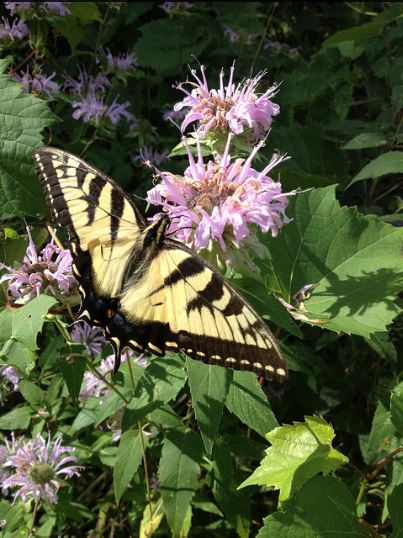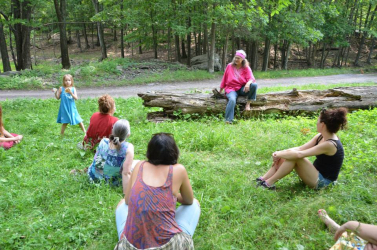
Once upon a time, healing was considered an art. Healing was understood by all to be a complex interaction between the patient, the healer, the community of living people, the communities of the plants and animals (and insects and rocks and fish), the communities of the non-living people (such as ancestors, spirit guides, and archetypes) and that mysterious movement known by so many names: Creator, God/dess, All High.
The healing arts included a keen knowledge of human behavior, a thorough knowledge of plants, a flair for the dramatic arts, especially singing/chanting and costuming/body painting, and a comprehensive knowledge of anatomy, physiology, and biochemistry. (If you think these areas are not arts, look at the system used by Traditional Chinese Practitioners which includes such "organs" as the triple heater and a dozen different pulses.)
Art does not preclude or oppose science. Science is, after all, only the honest testing of ideas and the ability to observe clearly the confusing relationship of cause and effect. The best of science is deeply indebted to art. Art understands that science is left-brained and art is right-brained, and a whole brain includes both.
Science, however, is not so easy with art. Science believes art is superstition. Science believes art is fuzzy, soft, not-replicable, and therefore untrustworthy. (It is interesting to me that the Liberal Arts University I attended -- UCLA -- required students to take a variety of science courses, but the Science College I turned down -- MIT -- did not require students to study the arts.) Science defines itself as factual and art as fantastical.
Truly great scientists understand the need to honor intuition along with information. But the world is rarely run by the truly great. So bit by bit, the art of healing is denigrated and the science of healing is venerated. The healer spends more and more time interacting with machines and drugs and technology and less and less time with the patient; more and more time studying books and less and less time learning about the strange, symbolic, provocative powers of the psyche. The healer focuses more and more on fixing the sick individual and less and less on the patient's need for wholeness in self, family, and community.
The herbalist becomes a biochemist. The pharmacist no longer needs to know botany. Herbs are presented as drugs in green coats. And the active ingredient is the only one worth mentioning.
Is this what I want? Is this what drew me to herbs? Is this what fascinates me about herbal medicine? My answer to all these questions is absolutely NOT. While acknowledging the usefulness of science, I maintain the right-brain's superior abilities in the art of healing. I defend the rights of the miracle-workers, the shamans, the witch doctors, the old-wif herbalists, the wise women, those who have the skill, the personal power, and the courage to midwife the changes -- large and small, from birth to death and in between -- in the lives of those around them.
Herbal medicine. Magical plants. Psycho-active plants. There is a thread here, and it goes a long way back. At least 40,000 years. The plants say they spoke with us all until recently. Forty thousand years ago we know our ancestors were genetically manipulating, hybridizing, and crossbreeding specific psychedelic plants. And using them in healing. Maria Sabina, one of the twentieth century's most renowned shamanic healers, went into the forest as a small child and ate psilocybin mushrooms because they spoke to her. She healed only with the aid of the "little people" (mushrooms) and she healed not just body but soul. In the Amazon, the students of herbalism, of healing, are apprenticed to psychoactive plants as well as to human teachers.
There is a lot of talk lately about the active ingredients in plants. I've had many a chuckle as product ads claim to have the most of this or that only to be superseded by the announcement that a new, better, more active active ingredient has been found. For example, when Kyolic Garlic was shown by Consumer Reports to have virtually no allicin (the "active" ingredient), Kyolic countered with an ad campaign claiming superiority because it contained a different, stronger, active ingredient.
For instance, most standardized St. John's/Joan's wort tinctures are standardized for hypericin. But the latest research shows that hyperforin is the real active ingredient! To illustrate: an article several years ago in JAMA on use of Ginkgo biloba to counter dementia explained that no active ingredient from among the several hundred constituents present had been determined and it was, in fact, likely that the effect resulted from a complex, synergistic interplay of the parts. An article in the New York Times, however, cautioned readers not to use ginkgo until an active ingredient had been established.
It happened to me: An MD on a menopause panel with me told the audience that no herb was safe to use unless its active ingredient was measured and standardized. What can I say? To me the active ingredient of a plant is the very part that cannot be measured: the energy, the life force, the chi, the fairy of the plant, not a "poisonous" constituent. To the healer/artist/herbalist, the active part of the plant is that part that can be used by the right brain to actively, chaotically, naturally, "jump the octave" and work a miracle. This active part is refined away in standardized products, for the real active part is the messy part, the changeable part, the subtle part, and the invisible part.
Does science have anything to do with it? Certainly! The process of identifying specific compounds in plants, replicating them in the laboratory and mass-producing them as drugs cannot be replicated by or superseded by any healer or herbalist. Preparation of standardized drugs protects the consumer (usually) and protects the plants from over-harvesting (although the net effect on the environment may be detrimental).
If we put into the lap of science anything having to so with measuring and certifying, then surely I beg science to be the guardian of the purity of the herbs we trade in our commerce, knowing that art is the guardian of the purity of the herbs we gather ourselves. (A tip from the apprentice book: When Harvesting put only one kind of plant in a basket. This allows one to quickly and easily notice if an interloper has been mistakenly introduced.)
This story doesn't have an ending, for it is ongoing. The dance of health and illness, of art and science (and don't forget commerce) has no pause. So the ending of our tale is not happy, but neither is it sad. Take a look, the real ending of the rainbow is in your own heart.

 The Wise Woman Center exists to re-weave the healing cloak of the Ancients. This land is sacred, it is a safe space for women, and a place for the teachings of the Wise Woman way. The Goddess lives here, as do goats, fairies, green witches, and elders.
The Wise Woman Center exists to re-weave the healing cloak of the Ancients. This land is sacred, it is a safe space for women, and a place for the teachings of the Wise Woman way. The Goddess lives here, as do goats, fairies, green witches, and elders.

